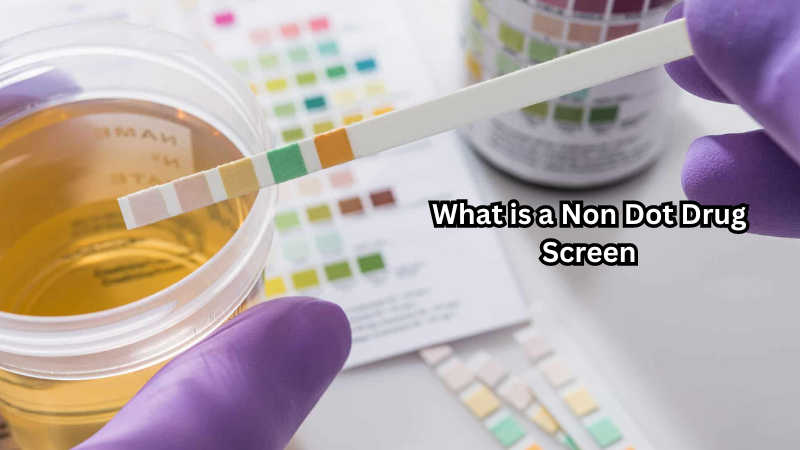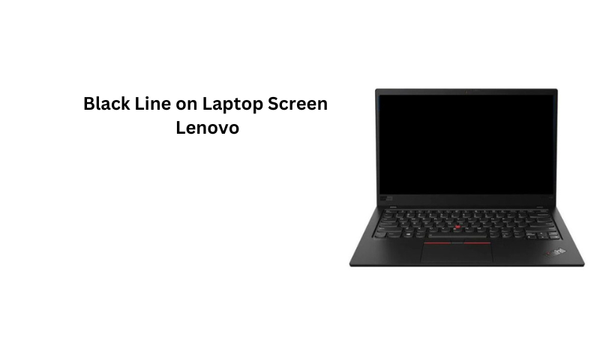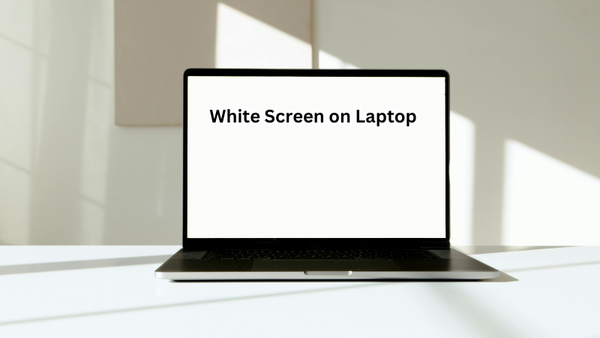In today's workplace, ensuring a safe and productive environment is paramount, often including drug screening protocols. A Non-DOT drug screen refers to drug testing not regulated by the Department of Transportation (DOT).
Private companies and organizations typically implement these screenings to maintain safety, compliance, and employee wellness.
Unlike DOT-regulated tests, Non-DOT drug screens can be tailored to the specific needs of a business, testing for a wider range of substances and using various methods such as urine, hair, saliva, and blood tests.
Understanding Non-DOT drug screens is crucial for employers across multiple industries, from healthcare to corporate settings, to foster a drug-free workplace.
Understanding Non-DOT Drug Screens
Non-DOT drug screens are an essential aspect of maintaining a safe and healthy workplace.
These screenings are designed to test for the presence of illicit substances in an individual's system, helping employers identify potential risks and prevent accidents or incidents caused by drug use. Unlike DOT-regulated tests, non-DOT drug screens offer more flexibility in terms of testing methods and the types of drugs that can be detected.
While DOT-regulated tests focus on specific drugs such as marijuana, cocaine, amphetamines, opiates, and PCP, non-DOT screenings can also include additional substances such as benzodiazepines, barbiturates, and synthetic drugs like Spice or K2. This allows employers to have a more comprehensive understanding of an individual's drug use habits and potential risks.
Importance of Non-DOT Drug Screens
The implementation of non-DOT drug screens in the workplace is crucial for several reasons. Firstly, it promotes a safer and more productive working environment.
Employees who use drugs on or off duty can pose significant risks to themselves and others, especially when operating heavy machinery or performing safety-sensitive tasks. By conducting regular Non-DOT drug screens, employers can identify individuals who may be under the influence of drugs and take appropriate measures to prevent accidents or incidents from occurring.
Moreover, non-DOT drug screens also help businesses comply with state laws and regulations regarding drug testing in the workplace. While DOT-regulated tests are mandatory for certain industries such as transportation, other companies may not have specific guidelines to follow. However, conducting non-DOT drug screens can still help businesses protect themselves from potential legal disputes and maintain a healthy work culture.
Another crucial aspect of non-DOT drug screens is their role in promoting employee wellness. Drug use can have severe physical and mental health consequences, which not only affect the individual but also impact their performance and well-being at work.
Differences Between DOT and Non-DOT Drug Screens
While both DOT and non-DOT drug screens serve the same purpose of detecting drug use, there are some significant differences between the two types of tests. The most notable difference is that DOT-regulated tests have stricter guidelines and regulations to follow compared to non-DOT screenings, which allows for more flexibility in terms of testing methods and substances detected.
DOT-regulated tests are mandatory for employees working in safety-sensitive positions in industries such as transportation, aviation, and pipeline operations. These tests must adhere to specific guidelines set by the DOT, including using certified laboratories and following strict chain-of-custody procedures. In contrast, non-DOT drug screens do not have these mandatory requirements and can be conducted by any accredited laboratory.
Another significant difference is the substances tested for in each type of screening. As mentioned earlier, DOT-regulated tests focus on specific drugs, while non-DOT screenings can detect a wider range of substances. This is because DOT-regulated tests only need to comply with federal regulations, while non-DOT drug screens may also adhere to state laws and industry-specific guidelines.
Moreover, the frequency of testing also varies between the two types of screenings. DOT-regulated tests require pre-employment, post-accident, random, and return-to-duty testing for employees in safety-sensitive positions. On the other hand, Non-DOT drug screens can be conducted at any time during an employee's tenure or as per the employer's discretion.
Employers need to understand these differences and determine which type of drug screening is best suited for their business needs. While DOT-regulated tests may be mandatory in certain industries, non-DOT drug screens offer more flexibility and can provide a more comprehensive understanding of an individual's drug use habits.
Non-DOT drug screens play a vital role in ensuring workplace safety, promoting employee wellness, and maintaining compliance with state laws and industry regulations. By understanding the differences between DOT and non-DOT screenings, employers can make informed decisions about implementing drug testing policies that best suit their unique business needs.
Types of Tests Involved in Non-DOT Drug Screens
Several types of tests can be included in Non-DOT drug screens, each with its advantages and limitations. The most commonly used testing methods include urine, hair, saliva, and blood tests.
Urine tests are the most common type of drug screening as they are non-invasive and provide quick results. They can detect recent drug use but may not be able to identify more long-term or infrequent use.
Hair tests, on the other hand, can detect drug use over a longer period, up to 90 days. This makes them useful for identifying chronic or habitual drug users but may not be suitable for detecting recent usage. Saliva tests are gaining popularity due to their convenience and quick results, as they can detect drug use within a few hours of consumption. However, their detection window is shorter compared to urine and hair tests.
Blood tests are the most invasive and expensive type of drug screening but provide accurate results for recent drug use. They are typically used in post-accident or reasonable suspicion situations.
Employers should carefully consider the type of test they include in their Non-DOT drug screens based on their specific needs, budget, and testing goals. Some companies may opt for multiple types of tests to get a more comprehensive understanding of an employee's drug use habits.
Common Non-DOT Drug Test Challenges
While non-DOT drug screens can provide valuable insights for employers, some challenges may arise during the testing process. These challenges may include false positives, sample tampering or adulteration, and legal disputes.
False positives occur when a test result shows positive for drug use even though the individual did not consume drugs. This can happen due to various reasons such as cross-reactivity with other substances or flaws in the testing process. To avoid false positives, employers must use certified laboratories and follow strict protocols.
In some cases, individuals may try to tamper with their samples by diluting them or adding substances to alter the results. This can be challenging to detect but can be mitigated by implementing strict chain-of-custody procedures and conducting observed sample collections.
Legal disputes may also arise during non-DOT drug screens if an individual claims the test results were inaccurate or violated their rights. To avoid legal challenges, employers should ensure that their testing policies comply with federal and state laws and industry-specific guidelines.
Overall, while Non-DOT drug screens have their challenges, they are a valuable tool for promoting workplace safety, maintaining compliance, and supporting employee health and well-being. By understanding these potential challenges and taking necessary precautions, employers can effectively implement drug testing policies that benefit both their businesses and employees.
Industries That Use Non-DOT Drug Screens
Non-DOT drug screens are commonly used in a variety of industries to ensure workplace safety and compliance with industry regulations. Some of the most common industries that require Non-DOT drug screenings include healthcare, manufacturing, construction, hospitality, and retail.
In the healthcare industry, employees who handle medication or operate heavy machinery must undergo regular Non-DOT drug screens to ensure patient safety. Manufacturing companies also have strict substance abuse policies and may conduct Non-DOT screenings for all their employees.
Construction companies often have safety-sensitive positions that require individuals to be alert and focused at all times. As such, they may implement Non-DOT drug testing as part of their employment process and conduct random tests throughout an employee's tenure.
In the hospitality and retail industries, where employees interact with customers and handle cash, Non-DOT drug screens are also common. These companies prioritize workplace safety and customer satisfaction, making drug testing a necessary part of their hiring process. Also, some state laws require non-DOT drug screens for certain industries, such as transportation and childcare services.
FAQs
What is a non-DOT drug screen?
A non-DOT drug screen refers to drug tests that are not regulated by the Department of Transportation (DOT). Non-DOT testing is typically used for workplace drug testing in industries that do not fall under DOT regulations. These tests can include both drug and alcohol testing but are not bound by the strict guidelines of DOT drug and alcohol testing.
How does non-DOT drug testing differ from DOT testing?
Non-DOT drug testing differs from DOT testing in that it is not regulated by federal DOT standards. While DOT drug tests follow specific protocols for safety-sensitive transportation employees, non-DOT drug tests are more flexible and can be tailored to an employer's specific needs. Non-DOT testing is commonly used in general workplace drug testing.
Are alcohol tests included in non-DOT drug screens?
Yes, non-DOT drug screens can include alcohol testing, but this is at the discretion of the employer. Unlike DOT drug and alcohol tests, which have strict guidelines, non-DOT testing can vary in what substances are tested for, including whether random drug testing for alcohol is conducted.
When is non-DOT drug testing typically used?
Non-DOT drug testing is typically used in industries that are not regulated by the DOT. Employers may implement non-DOT drug tests as part of their workplace drug testing programs for hiring, random testing, or in response to specific incidents. This type of testing provides flexibility in terms of the substances tested and the frequency of random drug and alcohol testing.
Conclusion
In conclusion, non-DOT drug screens play a vital role in maintaining a safe and productive workplace across various industries.
By understanding the differences between DOT and non-DOT drug screens, companies can implement tailored testing protocols that meet their specific needs. These screens help ensure compliance with company policies, protect the organization’s reputation, and promote employee health and wellness.
Whether it’s through urine, hair, saliva, or blood tests, regular drug screening is essential for fostering a drug-free environment. Employers are encouraged to establish comprehensive drug screening policies to create a secure and efficient workplace, ultimately benefiting both the organization and its workforce.





